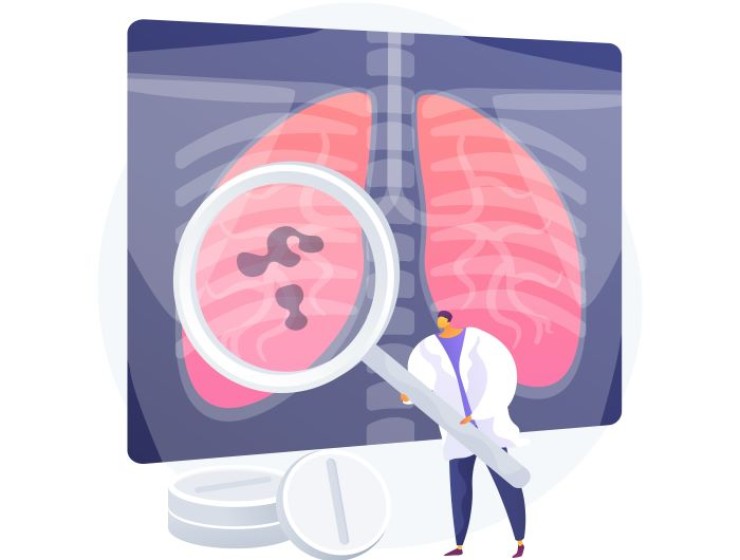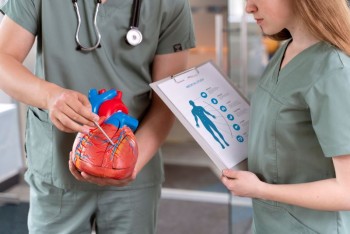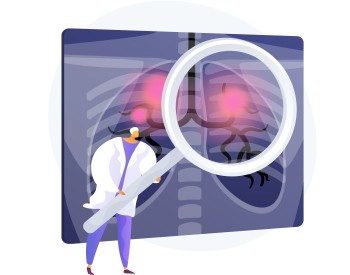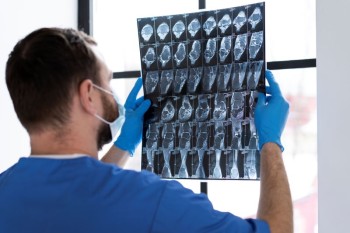
HRCT Chest Plain Scan, or High-Resolution Computed Tomography Chest Plain Scan, stands as a crucial diagnostic tool for assessing pulmonary conditions.
HRCT Chest Plain in India with Cost
HRCT Chest Plain Scan: Unveiling Pulmonary Precision
Introduction
Exploring Pulmonary Health with HRCT Chest Plain Scan
HRCT Chest Plain Scan, or High-Resolution Computed Tomography Chest Plain Scan, stands as a crucial diagnostic tool for assessing pulmonary conditions. This comprehensive guide aims to illuminate the significance, procedure, and applications of HRCT Chest Plain Scan, offering a thorough understanding of its role in pulmonary health diagnostics.
Understanding HRCT Chest Plain Scan
What is HRCT Chest Plain Scan?
HRCT Chest Plain Scan is an advanced imaging procedure that utilizes computed tomography to capture high-resolution images of the chest without the use of contrast agents. This specialized scan offers detailed views of pulmonary structures, aiding in the diagnosis and characterization of various respiratory conditions.
The Significance of HRCT Chest Plain Scan
Precision in Pulmonary Imaging
HRCT Chest Plain Scan plays a pivotal role in achieving precision in pulmonary imaging, offering detailed views of the lungs and surrounding structures to identify conditions such as infections, tumors, or interstitial lung diseases.
Evaluation of Lung Parenchyma
With high-resolution images, the scan facilitates a comprehensive evaluation of lung parenchyma, assisting healthcare professionals in diagnosing and planning appropriate interventions for pulmonary disorders.
The Procedure: A Step-by-Step Guide
Patient Preparation
Patients undergoing HRCT Chest Plain Scan typically require minimal preparation. It's essential to communicate any allergies or relevant medical history to the healthcare team.
Image Acquisition
The CT scanner captures multiple high-resolution images, providing detailed cross-sectional views of the chest, including the lungs, airways, and surrounding structures.
Applications of HRCT Chest Plain Scan
Diagnosing Respiratory Conditions
HRCT Chest Plain Scan is highly effective in diagnosing various respiratory conditions, offering precise images that assist in determining the location, extent, and characteristics of pulmonary issues.
Identifying Lung Abnormalities
The detailed imaging capabilities of this scan make it an invaluable tool for identifying lung abnormalities, including nodules, masses, or areas of inflammation, contributing to accurate diagnoses.
Advantages and Considerations
Advantages of HRCT Chest Plain Scan
Detailed Visualization of Pulmonary Structures
HRCT Chest Plain Scan provides detailed visualization of pulmonary structures, ensuring accurate assessment and aiding in the identification of various respiratory conditions.
Quick and Non-Invasive Procedure
The procedure is relatively quick and non-invasive, contributing to patient comfort and ease of examination while delivering high-quality diagnostic information.
Considerations and Precautions
Radiation Exposure
As with any CT scan, consideration is given to radiation exposure. The healthcare team carefully evaluates the benefits against the risks for each patient, prioritizing patient safety.
Conclusion
In conclusion, HRCT Chest Plain Scan emerges as an essential diagnostic tool, providing detailed and high-resolution images for precise assessment of pulmonary conditions. From infections to lung abnormalities, this imaging technique significantly contributes to enhancing pulmonary health diagnostics.
FAQs: Clarifying HRCT Chest Plain Scan
1. Is HRCT Chest Plain Scan a painful procedure?
No, the procedure is generally painless. Patients may experience slight discomfort lying still during the scan.
2. How long does an HRCT Chest Plain Scan take?
The procedure typically takes around 15 to 30 minutes, depending on the patient's condition.
3. Are there any dietary restrictions before an HRCT Chest Plain Scan?
Generally, there are no specific dietary restrictions for this scan. However, patients are advised to follow any instructions provided by the healthcare team.
4. Can pregnant women undergo HRCT Chest Plain Scan?
While generally safe, precautions are taken for pregnant women, and alternative imaging methods may be considered.
5. How often is HRCT Chest Plain Scan recommended for follow-up examinations?
Follow-up scans are scheduled based on the individual's medical history and the presence of specific pulmonary conditions.
6. Can HRCT Chest Plain Scan detect lung cancer?
Yes, HRCT Chest Plain Scan is a highly sensitive imaging tool that can detect lung cancer at an early stage, providing detailed views of lung structures.
7. Is HRCT Chest Plain Scan suitable for individuals with respiratory symptoms but no known lung conditions?
Absolutely. HRCT Chest Plain Scan is beneficial for investigating respiratory symptoms, helping to identify potential issues even in the absence of known lung conditions.
8. Are there any age restrictions for HRCT Chest Plain Scan?
There are no strict age restrictions, and the scan can be performed on individuals of various age groups based on their health condition and medical necessity.
9. How frequently can HRCT Chest Plain Scan be repeated for monitoring lung conditions?
The frequency of repeat scans depends on the specific medical condition and the recommendations of the healthcare team. It is typically determined on a case-by-case basis.
10. Is HRCT Chest Plain Scan safe during pregnancy?
While generally safe, the use of radiation raises concerns during pregnancy. Alternative imaging methods may be considered, and the decision is made after careful evaluation of the benefits and risks.
(0)
Login to continue



